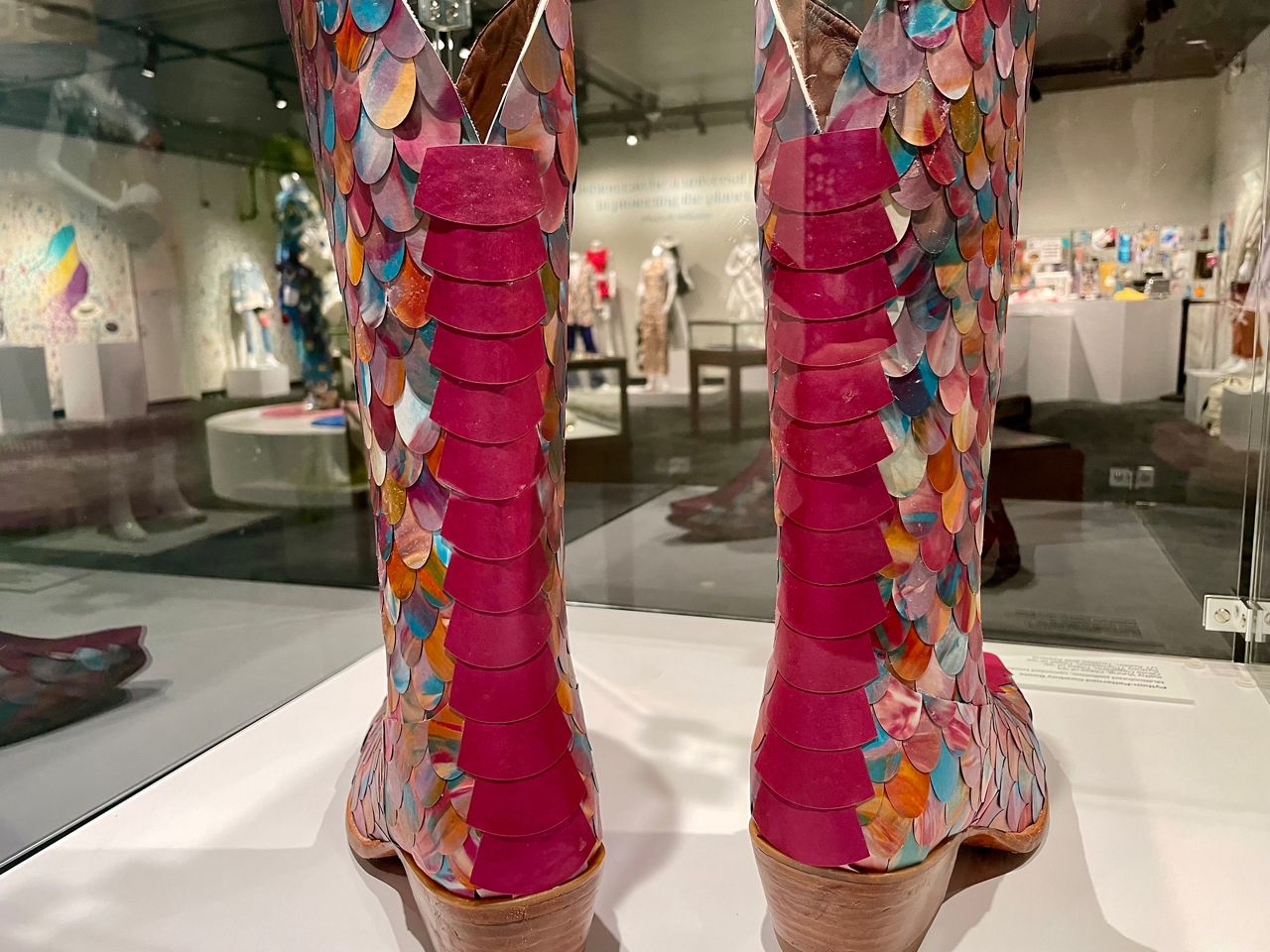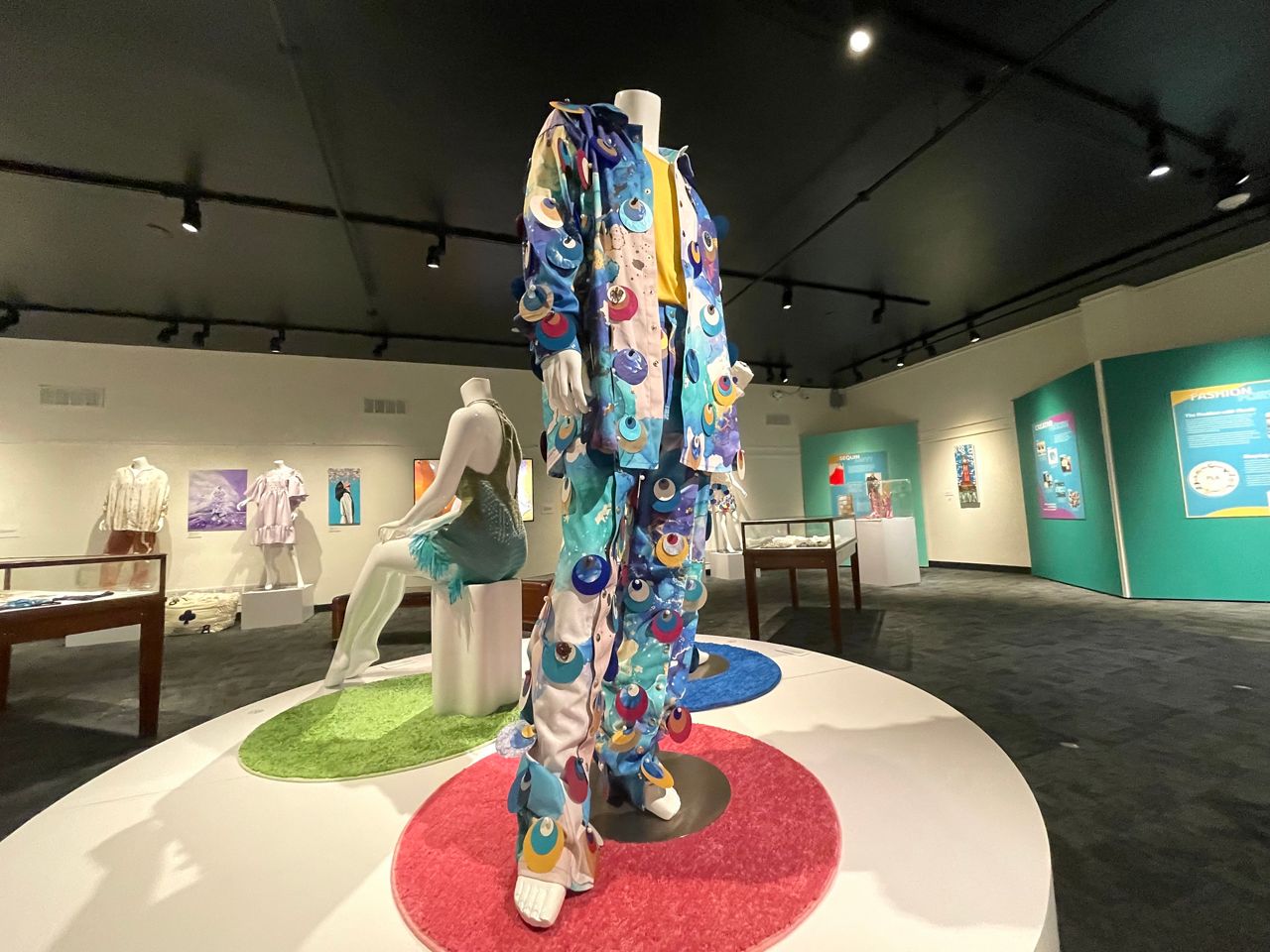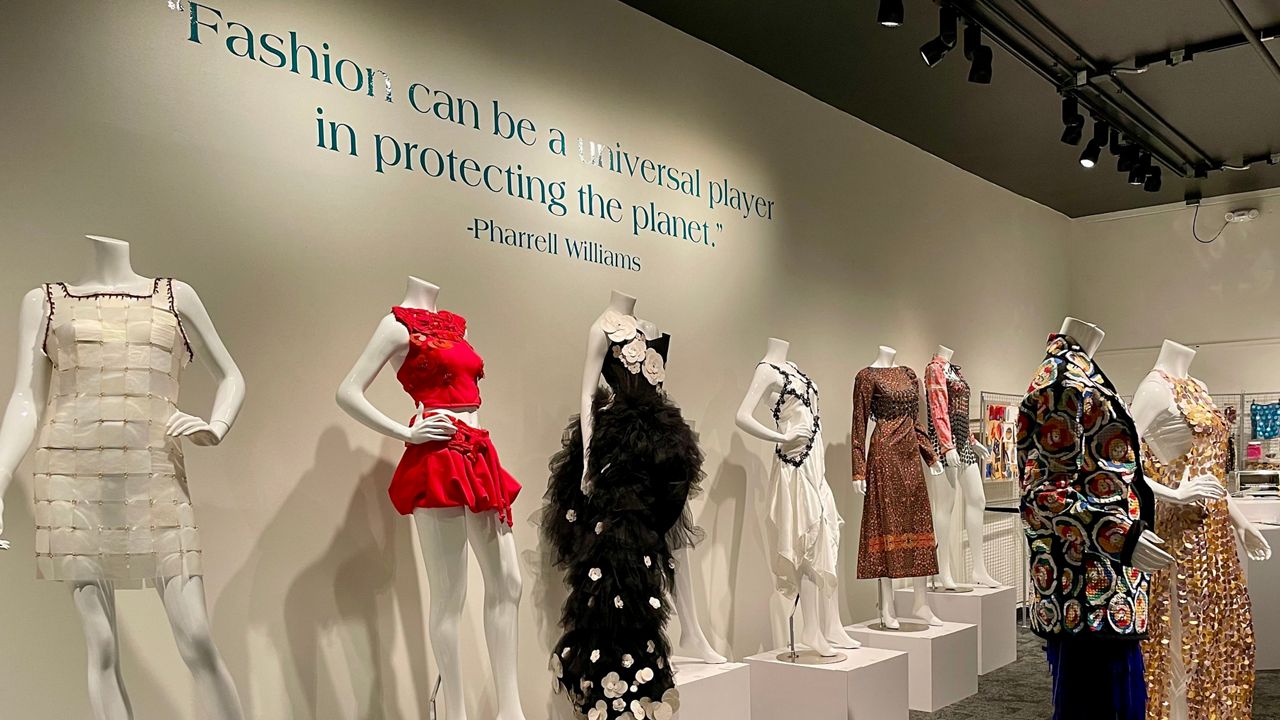AUSTIN, Texas - Particles of Color exhibition in Austin shows that resolving sustainability issues in the world of textiles may begin with a micro-sized solution.
“I directed a group of two other faculty and four other students to create a sustainable material that can be turned into sequins,” said Jessica Ciarla, an associate professor of instruction in the Division of Textiles and Apparels at the University of Texas at Austin.
Over the last several years, Ciarla has facilitated the collaboration of science and fashion to create sustainable sequins, integrating them into more than 50 pieces at the exhibit in the Texas Science & Natural History Museum. The sequins are made from a plant-based, renewable material, which will break down if composted. This innovation aims to address environmental concerns as approximately 60% of clothing material is made of non-degradable plastic, significantly contributing to the approximately 92 millions of tons of global textile waste.

UT researchers worked in collaboration with fashion designers across the country with the hope of bringing these particles from inside the lab to shelves, Ciarla said.
“One of our jewelry designers is Diana Broussard and she’s a New York designer who focuses on jewelry and shoes and a few garments,” she said.
Carolyn Connerat, managing director for the Texas Science and Natural History Museum, said the exhibit is drawing diverse crowds, with common interests.
“People really love some of the gowns… and the man's suit which has all of the colorful sequins on is especially a showstopper,” Connerat said. “The other piece that is so exciting to people is the cowboy boots.”
Connerat says the creation of the exhibit is representative of an emerging shift toward environmental consciousness in the industry.
“Listening to our younger generations and how they view sustainability and how they would practice that in their own creative design work, I think is really important, and a glimpse into what the future of the fashion industry can entail,” she said.
The pieces will remain on display through next spring, but Ciarla said attendees are already asking about expanding the exhibit beyond Central Texas.
“I do like this idea of extending it to another country or another state in America,” she said. “Even expanding the current selection that we have here and possibly bringing in some regional designers from the area that we explore.”




